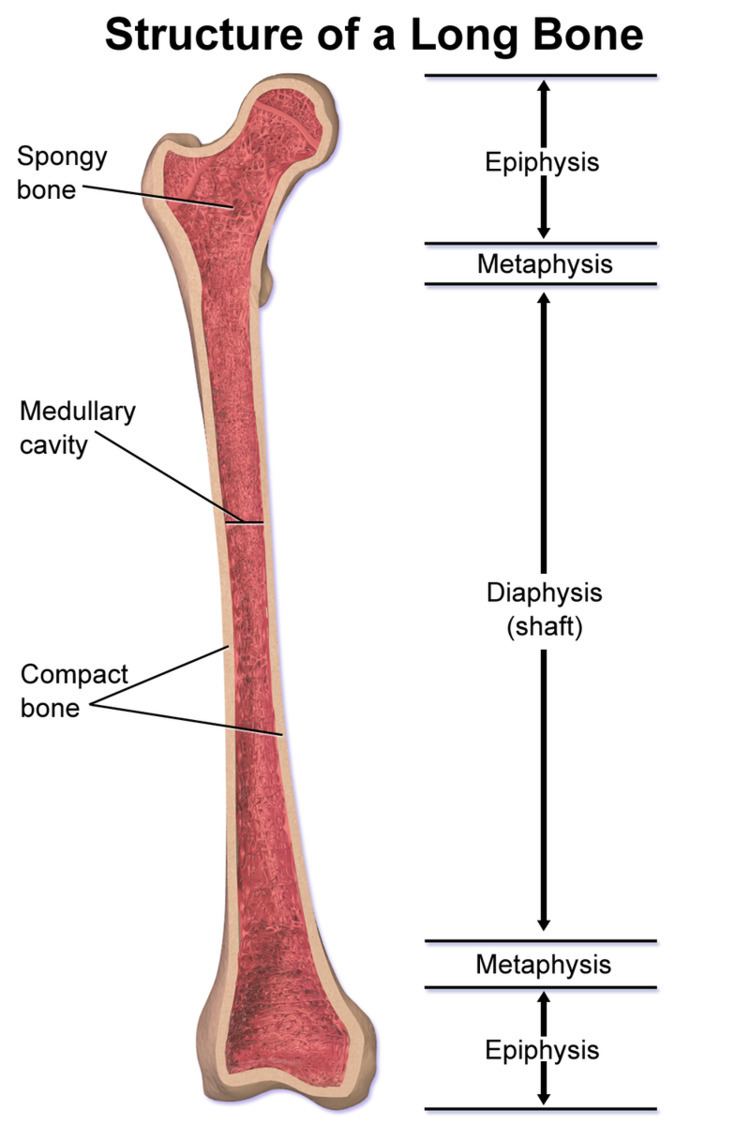MeSH A02.835.232.251 TA A02.0.00.018 | Dorlands/Elsevier 12338275 FMA 24012 | |
 | ||
Similar Diaphysis, Fibula, Humerus | ||
The epiphysis (/ɛˈpɪfᵻsᵻs/) is the rounded end of a long bone, at its joint with adjacent bone(s). Between the epiphysis and diaphysis (the long midsection of the long bone) lies the metaphysis, including the epiphyseal plate (growth plate). At the joint, the epiphysis is covered with articular cartilage; below that covering is a zone similar to the epiphyseal plate, known as subchondral bone.
Contents
The epiphysis is filled with red bone marrow, which produces erythrocytes (red blood cells).
Types
There are four types of epiphysis:
- Pressure epiphysis: The region of the long bone that forms the joint is a pressure epiphysis (e.g. the head of the femur, part of the hip joint complex). Pressure epiphyses assist in transmitting the weight of the human body and are the regions of the bone that are under pressure during movement or locomotion. Another example of a pressure epiphysis is the head of the humerus which is part of the shoulder complex.
- Traction epiphysis: The regions of the long bone which are non-articular, i.e. not involved in joint formation. Unlike pressure epiphyses, these regions do not assist in weight transmission. However, their proximity to the pressure epiphysis region means that the supporting ligaments and tendons attach to these areas of the bone. Traction epiphyses ossify later than pressure epiphyses. Examples of traction epiphyses are tubercles of the humerus (greater tubercle and lesser tubercle), and trochanters of the femur (greater and lesser).
- Atavistic epiphysis: These types of fused bones are called atavistic, e.g., the coracoid process of the scapula, which has been fused in humans, but is separate in four-legged animals.
- Aberrant epiphysis: These epiphyses are deviations from the norm and are not always present. For example, the epiphysis at the head of the first metacarpal bone.
Pathology
Pathologies of the epiphysis include avascular necrosis and osteochondritis dissecans (OCD). OCD involves the subchondral bone.
Epiphyseal lesions include chondroblastoma and giant-cell tumor.
References
Epiphysis Wikipedia(Text) CC BY-SA
